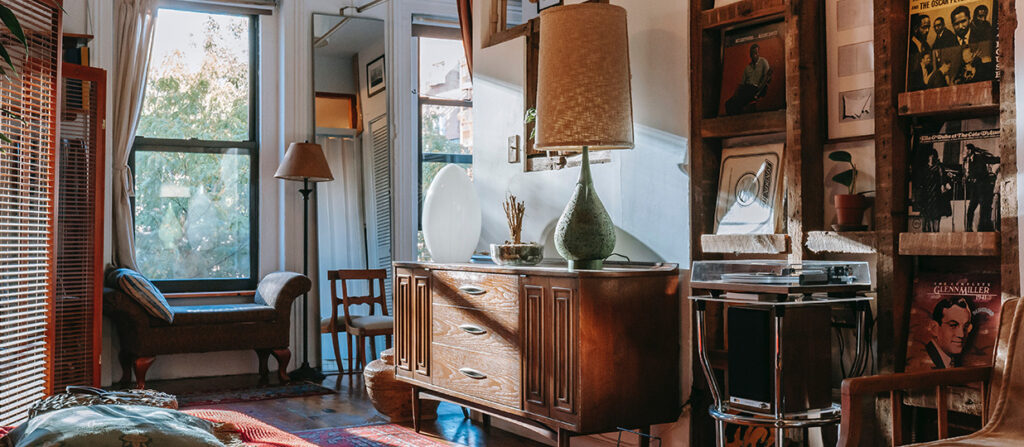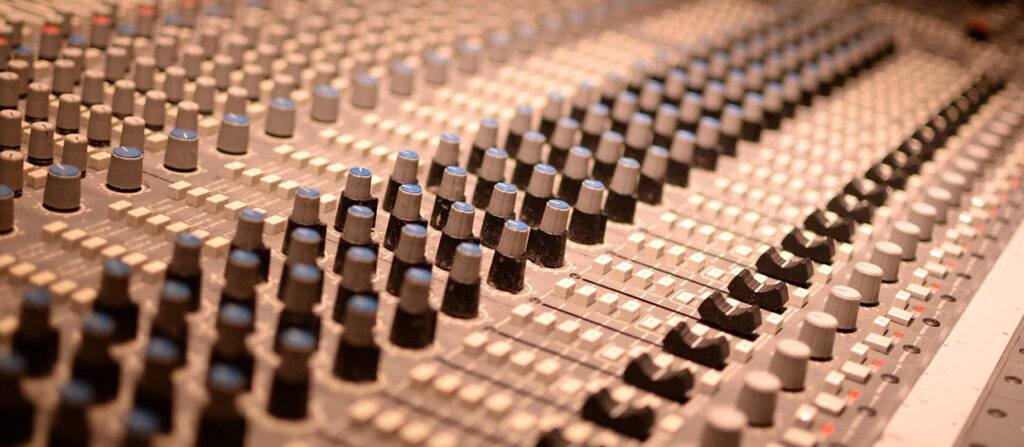In our digitally evolving universe, narratives unfold through diverse channels, and one particular medium has made a significant splash: audiobooks. The escalating trend of this format cannot be overlooked, a fact supported by a striking study conducted by Grand View Research, highlighting the explosive growth of the audiobook sector.
Whether you’re an experienced scribe or a budding author, crafting your personal audiobook can seem daunting. However, with the appropriate guidance and tools, this venture evolves into an enriching voyage of imaginative discovery. This in-depth guide simplifies the procedure for you, from manuscript refinement to the concluding stages of publishing.
Audiobook Experts are here to demystify the process for you, ensuring a smooth and stress-free journey. No need for lavish investments in recording equipment or grappling with the intricacies of uploading your finished audiobook — we take care of these details. Ready to navigate the currents of this thriving market and metamorphose your textual creativity into a captivating audiobook? Let’s begin!

Should You Try To Record Your Own Audiobook?
The first thing you need to determine when considering how to record an audiobook is if it’s even worth it for you individually to record this audiobook yourself. On one hand, when you record your own audiobook as the author, your audience will build a stronger connection with you, you won’t have to go back and forth with a narrator, and you don’t have to shell out a percentage of your profits with the narrator for just reading your words (most professional narrators ask for a percentage of the book’s profit). And on the other hand, hiring a narrator is much less time-consuming, but you will have to listen to the narrator record your book a number of times for quality control.
If these challenges appear overwhelming, don’t lose heart. The entire process can be a fulfilling and profitable experience that enables a special connection with your audience. Moreover, Audiobook Experts was designed with you in mind, where we teach authors just like you how to record an audiobook without buying a single piece of equipment or downloading a single thing. You can get more insights about the process on our website.
Creating your own audiobook can be a wonderful method of sharing your unique voice and ideas. With the correct resources and guidance, it doesn’t have to be an intimidating endeavor. Contemplate making the jump today!

Preparing Your Script for Audiobook Recording.
Once you’ve made up your mind that recording your own book is right for you, embark on your personalized audiobook recording journey by preparing your manuscript first. A key part of this procedure involves converting your final manuscript into a PDF. After accomplishing this, upload your book onto a “silent scroller” device. Such devices could include a touchscreen laptop, Apple’s Magic Mouse, an iPad, or a tablet – all superb options as they enable silent scrolling through your manuscript during recording. The utilization of an automatic scrolling feature, similar to what Adobe Acrobat offers, can be extraordinarily advantageous, ensuring a seamless reading and recording progression. In this manner, you ensure a continuous listening experience for your audience, particularly for those who enjoy following along with the audiobook, mirroring the experience provided by your print or electronic book.

Choosing The Right Software
When you’re on the journey of recording your own audiobook, a crucial decision involves choosing the right recording software. We personally have found the best audiobook recording software to be Audacity.
Audacity, as detailed on their official webpage, is an open-source, cross-platform audio software that’s both potent and user-friendly. It allows you to record crystal-clear audio and offers a multitude of editing tools at your disposal. Whether it’s reducing ambient noise or enhancing the clarity of your voice, Audacity caters to a wide range of recording needs.
The beauty of Audacity lies in its user-friendly interface, which offers a seamless experience, irrespective of your familiarity with audio software. This means you can concentrate more on delivering your book’s narrative with passion, without the hassle of navigating complicated software.
To further explore how to record an audiobook with optimal tools, pay a visit to our website. We provide detailed guides and professional advice to assist you in traversing the recording process with ease.

Choosing The Right Equipment
When first learning how to record an audiobook, navigating the maze of recording equipment can be tricky and demotivating. However, choosing the right microphone significantly impacts the quality of your recordings.
For those looking for superior quality, the Shure MV7 microphone is a brilliant choice. This high-end yet affordable microphone offers pristine sound quality that helps bring your words to life. The clarity and depth of sound captured by the MV7 reduce the need for extensive editing, saving you valuable time.
Alternatively, if you’re working with a tighter budget, the Blue Yeti Nano can be your ally. While it may require a bit more editing compared to higher-end models, it’s a solid option without breaking the bank. Remember, the quality of your recording doesn’t solely depend on the equipment, but also on how you use it.
Lastly, don’t overlook the importance of a good pair of headphones. Monitoring your recording in real time helps you catch any irregularities or mishaps early, ensuring the best possible output.
To learn more about the equipment and techniques that can best serve your audiobook recording process, visit our website. Here, you’ll find a comprehensive guide on how to record an audiobook, along with expert advice tailored to your unique needs.

Choosing The Right Room
Recording your own audiobook at home can be a rewarding experience. To get the best results, you’ll want to pay close attention to the choice of your recording room. A few factors to bear in mind include:
- Quietness: The room should be quiet and free from outdoor noise, such as traffic or neighborhood sounds. It should also be away from indoor noise like air conditioners or refrigerators.
- Size and shape: Small rooms with irregular shapes are ideal as they prevent the bouncing of sound waves, resulting in a clear recording.
- Furnishing: A room furnished with soft materials like carpets, curtains, and padded furniture can absorb sound and prevent echo, further improving the quality of the recording.
Remember, the success of recording your own audiobook largely depends on the conditions in which you record. So, take your time to set up the perfect environment at home. For more tips on how to record an audiobook, visit our website.

Recording Your Audiobook
Before you learn how to record an audiobook, my first suggestion is to do a vocal warmup routine. You might opt for reading aloud, performing vocal drills, and ensuring you are well-hydrated. This preparation will prime your voice for an optimal recording session.
Additionally, take some time to familiarize yourself with your script. Acknowledging the intended pacing, tone, and proper enunciation is a crucial step on how to record an audiobook. Gaining this understanding will elevate your performance and ultimately dictate the outcome of your Audiobook.
Establishing a regular recording routine is recommended. By consistently recording at the same hour each day, you ensure a stable vocal tone throughout your audiobook.
Regular breaks during your recording sessions are equally crucial. These short pauses ward off vocal fatigue, keeping your voice vibrant and lively.
As you delve into how to record an audiobook, bear in mind the strategy of recording in sections. Rather than striving to capture the entire book in one go, segment your recording for efficiency and consistency.
Should you stumble upon a mistake during recording, all you need to do is clap into the microphone and start again from the beginning of the sentence. This audible signal creates an easily identifiable spike in your editing software, streamlining the correction process later on which we’ll get to in the next paragraph.

Editing Your Audiobook
In one of the last steps to learning how to record an audiobook, you will venture into the editing phase. The first task involves purging any extraneous noise. Employ your chosen software to erase ambient sounds or hisses that could disrupt your listener’s experience, if you’re on Audacity, this will be a plugin called Noise Removal.
The next stage in the editing process involves trimming out errors or repeated sections you marked during recording with those claps. This is a key component in maintaining a fluent and high-quality audiobook.
Maintaining a consistent volume across your recording is vital. Adjust the sound levels as needed to provide a comfortable and balanced listening experience from start to finish.
In some instances, you might need to modify the speed of your narration. Strive for a steady and listener-friendly pace that neither races through nor lags in the story progression.
The final stage in your editing process calls for a comprehensive review of your edits, simply listen to the entire book. This is to ensure smooth transitions and to identify any residual errors.
Remember, if you find this, or any previous phase challenging, Audiobook Experts have already taken over all of these steps for hundreds of authors and can help you too, learn more about it here.

Launching Your Audiobook
After the successful recording and editing of your audiobook, the next step is to publish it! At the very least, we recommend that you upload your book to ACX, Amazon’s audiobook service. After uploading your audio files, they’ll be reviewed for quality, a process that can take up to 30 days. Once approved, your audiobook will be listed alongside your other book formats on the Amazon marketplace.
Well done! You’ve successfully learned how to record your own audiobook! With Audiobook Experts, you don’t have to worry about investing in expensive equipment or wonder about the intricacies of uploading your audiobook. We handle everything, making the process hassle-free and efficient.
